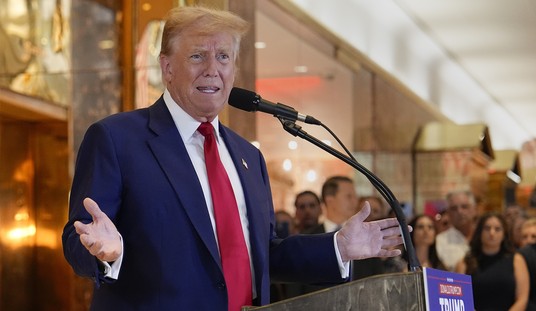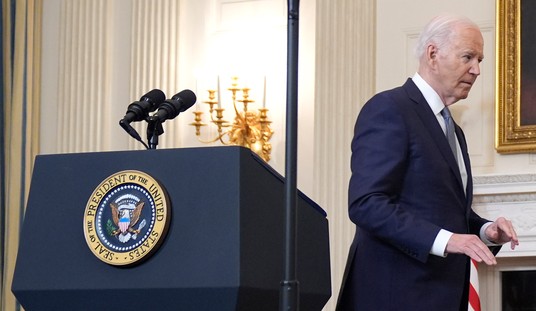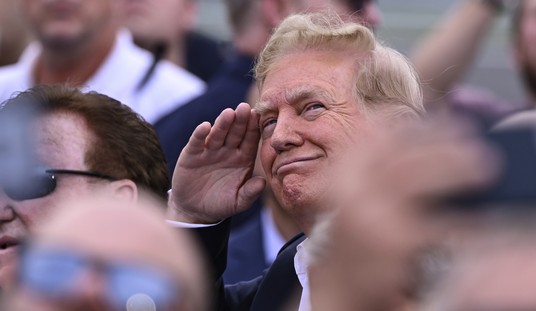As the infamous Troubled Asset Relief Program (TARP) winds down this week, Republicans and Democrats in Washington, D.C. are patting themselves on the back for a job well done. Not only are they claiming to have saved the nation from a “Second Great Depression,” this so-called economic miracle was apparently purchased at a bargain basement price.
According to the Congressional Budget Office, TARP will cost taxpayers “only” $66 billion. The White House puts the figure even lower – at $50 billion. Of course these rosy, election-year estimates are based on government liquidating its ownership stake in hundreds of “private” corporations – including a 92 percent stake in the American International Group (AIG) and a 61 percent stake in General Motors (GM).
For taxpayers to recoup their “investment” in AIG, the government will have to sell 1.66 billion shares of common stock at an average price of $29 per share. At GM, the government must sell 304 million shares of common stock at an average price of nearly $134 per share. Hitting these targets would be a daunting task in any economic climate – and may prove insurmountable in our ongoing malaise.
“How does one get $49 billion out of a company that’s currently worth $25 billion?” an investment research publication recently asked. “The follow on question is: why would investors buy AIG shares while the government’s AIG stock sale could last 18-24 months?”
Short answer? They wouldn’t – and likely won’t.
Meanwhile GM has dramatically scaled back its initial public offering in recent weeks – a sign that the company will be forced to continue operating under the “Government Motors” banner for the foreseeable future.
Recommended
But this debate isn’t about getting an accurate accounting of the final TARP tab and assessing its risk versus reward – it’s about honestly assessing the problems that come with government picking winners and losers in the marketplace in the first place. Even if government’s taxpayer-funded investments yielded better than average returns (or huge cash windfalls), that doesn’t make them right – nor does it mean taxpayers will ever see one red cent of their money back.
And while TARP has enabled union bosses in Detroit and AIG executives all over the world to make out like bandits (as bureaucrats across the country did in the wake of the “stimulus”), what about the people who were forced to pick up the tab? What about the 15 million Americans who are currently unemployed? Or the millions of American households that have seen their income levels decline in each of the last two years? What about the small business owners whose taxes are about to skyrocket as government begins making interest payments on its massive new debt?
Certainly interest rates are low for the time being, but the threat of rising rates is a ticking time bomb.
In designating the wealthiest Wall Street banks as “too big to fail” Washington told the rest of America that it was “too small to succeed.”
Also, there is also considerable debate as to the accuracy of the “doom and gloom” pronouncements that preceded TARP – which would obviously negate much of its supposed efficacy in avoiding a global economic meltdown.
For example, a week before TARP passed, Federal Reserve Chairman Ben Bernanke appeared before the Joint Economic Committee of the U.S. Congress and made an impassioned plea for taxpayer-funded intervention, saying that emergency action was required immediately in order to “address the grave threats to financial stability that we currently face.”
At this hearing, Bernanke testified that the commercial paper market was on the verge of shutting down. This sent major shock waves through Congress, as many companies use the sale of this short-term debt to pay their bills and make payroll. A week after Congress passed TARP, however, Bernanke announced the creation of a special commercial paper funding facility – thus arbitrarily alleviating one of the key pressures he had used as leverage to help get the bailout passed.
Perhaps the most effective argument against those who claimed that the sky would fall in October 2008 absent government intervention is the fact that government intervened – and the sky fell anyway. Economists in their taxpayer-funded ivory towers will no doubt continue to do battle over hypothetical contingencies, but that doesn’t change the fact that 8 million jobs vanished in just over a year’s time – and those jobs aren’t coming back anytime soon. Meanwhile, none of the TARP money that’s been repaid to the U.S. government thus far is actually being returned to taxpayers. Nor is it being used to pay down America’s ballooning debt. Instead, it’s being spent on new bailouts, more borrowing and additional deficit spending.
Also, in confronting the “toxic” realities of TARP it’s important to remember that its initial $700 billion outlay represents only a small sliver of the money government has spent, lent, pledged and printed since the recession began in December 2007.
That’s a tab taxpayers will still be picking up decades from now.

























Join the conversation as a VIP Member